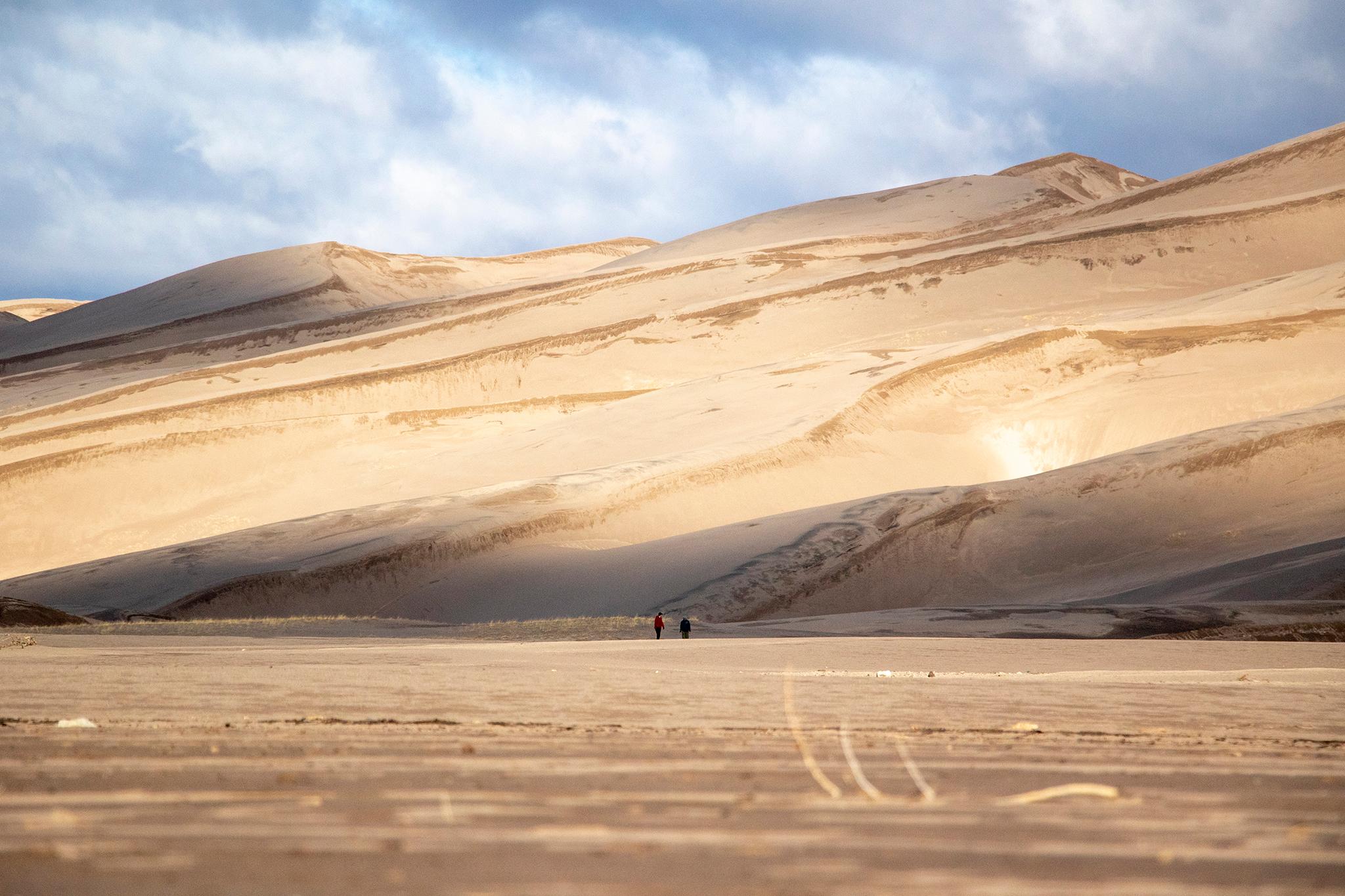
The Great Sand Dunes National Park could become the first in America and the second in the world to have a “quiet designation.”
The designation as a quiet zone from Quiet Parks International, a preservation advocacy organization that aims to protect the natural sound of the wilderness, recognizes the Dunes as a place mostly free of human-made sound.
The move comes after the Great Sand Dunes were designated as an International Dark Sky Park to fight light pollution in May.
There’s only one other park in the world with a quiet designation, a 200,000-acre area of land along the Zabalo River in the Ecuadorian Amazon. Quiet Parks International awarded the designation to the indigenous Cofán tribe in April 2019.
In addition to the Great Sand Dunes and the Zabalo River park, the organization has 262 potential sites around the world that could be certified and preserved.
Matt Mikkelsen of Quiet Parks International has a series of tests to determine if a destination meets the quiet zone designation criteria. Mikkelsen visited the dunes last month and performed sound level readings, collected data and met with park staff.
In early 2020, Mikkelsen and a team from Quiet Parks International will come back and deploy stationary acoustical measuring equipment throughout the Great Sands Dunes for a week. The equipment will monitor sound levels at specific time frames. The recordings are then analyzed at a lab to see how many planes pass by, how often cars are heard and what is the noise-free interval on average. After that final test, it’ll be decided if the Great Sand Dunes will get the quiet designation.
The point of this designation isn’t silence, because nature can be noisy. It’s about only allowing natural sounds.
“When we’re doing our certifications for wilderness quiet parks, what we’re looking at really is the amount of noise pollution in that area,” Mikkelsen said. “And that’s relevant because there’s so few places left on Earth that is unaffected by noise pollution.”
A lot of noise traffic comes from air travel. Finding even 10 to 15 minutes of quiet out in nature is fairly rare because of the amount of planes in the sky. Other big sources of noise pollution include mining, fracking, and road noise.
Other than it being unnatural and annoying while you’re trying to peacefully star gaze, noise pollution also affects wildfire. Rachel Buxton, a conservation biologist who was the lead author of a sound study at Colorado State University, said it can be the difference between life and death for many animals.
“Think of a fox that is looking for a mouse under layers of snow,” Buxton said. “If the fox can no longer hear its prey, that can be the difference between getting a meal or not. And for the mouse, if it can’t hear the fox coming, that’s the difference between becoming a meal or not.”
The ideal scenario for Mikkelsen would be to make agreements with the Federal Aviation Administration to talk about planes taking alternative routes to not disrupt wilderness areas, but that’s unrealistic right now. Instead, he’s working on finding places that are already not in heavy plane or car traffic areas and protecting those. The organization also looks for places that are reliably quiet between one hour before sunrise and two hours after sunrise.
The Great Sand Dunes met all of those requirements since there’s no interstate nearby, there are limited roads and there is no mining or fracking in the vicinity. However, there are flights during the day that come around about every 10 minutes.
Most of the ways Quiet Parks International works on preservation is through education. The organization tries to motivate local communities to have conversations about noise pollution. Ideally, this would mean getting constituents to be vocal about sound preservation with their representatives.
As far as how this affects the average visitor, nothing will be prohibited, but there will be consistent monitoring by volunteers and park staff. The designation is more about making people aware and to have people become more considerate, Mikkelsen said.
“I know lots of people who like playing their music as they're hiking down the trails, but maybe that’s impacting the experience of another visitor of the park,” Mikkelsen said. “So I think we all have to be more conscious of how we enjoy these places, and places that are naturally silent deserve that extra consideration.”
Correction: A previous version of this story misspelled the Zabalo River on one reference.









